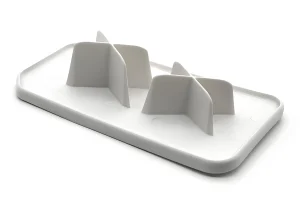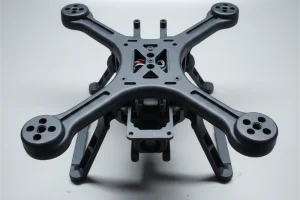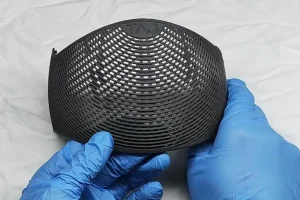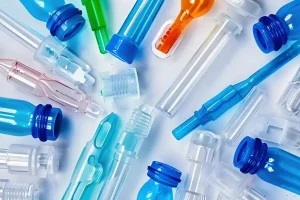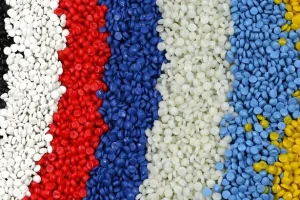Selecting the right thermoplastic resin for an injection molding project is a systematic process of balancing competing requirements. The optimal choice depends on a thorough evaluation of the part’s mechanical, thermal, chemical, and electrical properties, weighed against regulatory compliance, aesthetic finish, manufacturability, and total part cost. A mistake in material selection can lead to part failure, production delays, and significant cost overruns.
Definition: What is Material Selection in Injection Molding?
Material selection for injection molding is a critical phase of the product development cycle, often integrated within the Design for Manufacturability (DFM) process. It is the analytical discipline of choosing a thermoplastic polymer that best satisfies the functional, environmental, and economic requirements of a molded part. This decision directly impacts the part’s performance, lifespan, safety, and final production cost. It involves a trade-off analysis between material properties (data-sheet values) and processability (how the material behaves in the mold

Key Selection Criteria and Parameters
A successful material choice is based on quantifying the application’s demands. The following table outlines the primary parameters to consider.
| Parameter Category | Description | Common Units / Standards | Example Application Requirement |
|---|---|---|---|
| Mechanical Properties | The material’s response to physical forces. | Tensile Strength (MPa), Flexural Modulus (GPa), Izod Impact Strength (J/m), Hardness (Shore D, Rockwell R) | A snap-fit clip requires high flexural modulus and fatigue resistance. A protective housing needs high impact strength. |
| Thermal Properties | The material’s performance at various temperatures. | Heat Deflection Temperature (HDT) (°C/°F), Continuous Use Temperature (CUT) (°C/°F), Vicat Softening Point (°C/°F) | An automotive engine component must have a high HDT to prevent deformation under load at elevated temperatures. |
| Chemical Resistance | The material’s ability to resist degradation from exposure to chemicals. | Chemical compatibility charts (Rating: Excellent, Good, Fair, Poor), ASTM D543 | A medical device component must resist sterilization chemicals like isopropyl alcohol or ethylene oxide (EtO). |
| Electrical Properties | The material’s interaction with electrical fields. | Dielectric Strength (kV/mm), Surface/Volume Resistivity (Ohm/sq, Ohm-cm) | An electrical connector housing requires high dielectric strength to act as an insulator. |
| Aesthetics & Appearance | Visual characteristics of the finished part. | Color (RAL, Pantone), Surface Finish (Gloss, Matte, Texture), Light Transmission (%) | A consumer product lens requires high clarity and light transmission (e.g., Polycarbonate). A housing may need a specific color match. |
| Regulatory & Compliance | Adherence to industry- or region-specific standards. | FDA 21 CFR (Food), ISO 10993 (Medical), UL94 (Flammability), RoHS, REACH | A food container must be made from an FDA-compliant grade of Polypropylene (PP). An electronic enclosure must meet a UL94 V-0 flame rating. |
| Processability | How the material behaves during the molding process. | Melt Flow Index (MFI) (g/10 min), Mold Shrinkage (%) | A thin-walled part requires a high MFI for easy filling. A high, uniform shrinkage rate must be factored into tooling design. |
| Cost | The total economic impact of the material choice. | Cost per unit mass ($/kg or $/lb), Cost per part ($) | While Acrylonitrile Butadiene Styrene (ABS) may be cheaper per kg than Polycarbonate (PC), the total cost analysis must include cycle time and scrap rate. |
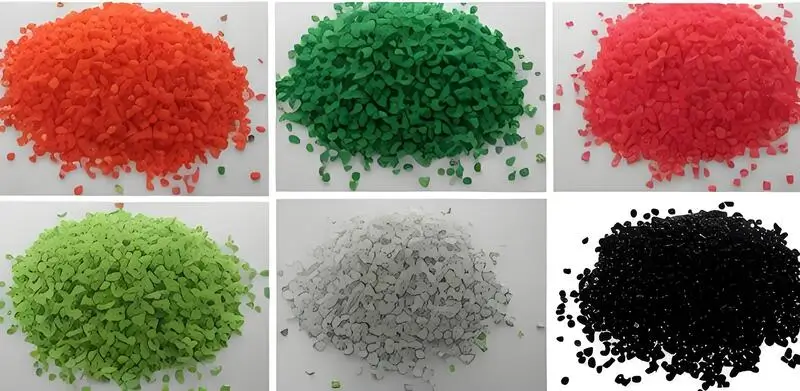
Consequences of Material Selection
The choice of material has direct and significant consequences for the entire product lifecycle.
| Correct Material Selection (Pros) | Incorrect Material Selection (Cons) |
|---|---|
| Optimal Part Performance: Meets or exceeds all functional and lifetime requirements. | Catastrophic Field Failure: Parts crack, warp, or break, leading to recalls and liability. |
| Cost-Effectiveness: Balances raw material price with efficient cycle times and low scrap rates. | High Production Costs: High scrap rates, slow cycle times, or need for secondary operations. |
| Process Stability: Consistent, repeatable molding process with a wide processing window. | Tooling Damage: Abrasive fillers (like glass fiber) can wear down molds; corrosive materials (like PVC) can damage steel. |
| Regulatory Adherence: Ensures market access and avoids legal penalties. | Non-Compliance: Part is rejected for use in regulated markets (medical, food, automotive). |
| Long-Term Reliability: Part maintains its integrity throughout its intended service life. | Aesthetic Defects: Poor surface finish, color mismatch, or visual flaws like sink marks and voids. |
Common Applications and Material Choices
| Application Area | Common Material(s) | Key Selection Drivers |
|---|---|---|
| Automotive Interior | Polypropylene (PP), ABS, PC/ABS blends | UV stability, scratch resistance, low cost, impact strength, aesthetic quality. |
| Medical Devices | Polycarbonate (PC), Polypropylene (PP), PEEK, Polysulfone (PSU) | Biocompatibility (ISO 10993), sterilizability (autoclave, gamma, EtO), chemical resistance. |
| Consumer Electronics | ABS, PC/ABS, Polyamide 66 (PA66) with Glass Fiber (GF) | Impact strength, aesthetic finish, tight tolerances, flammability rating (UL94). |
| High-Strength Gears/Bearings | Acetal / Polyoxymethylene (POM), PA66, PEEK | High lubricity, wear resistance, dimensional stability, high fatigue strength. |
| Food & Beverage Packaging | PP, Polyethylene (HDPE/LDPE), PET | FDA compliance, low cost, chemical inertness, moisture barrier properties. |
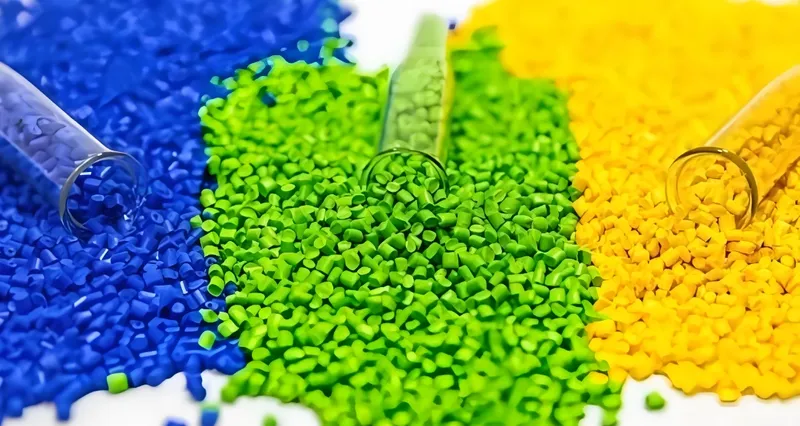
The 5-Step Material Selection Process
Follow this systematic process to ensure a data-driven material decision.
-
Define Part Requirements and Operating Environment
- Mechanical: What static or dynamic loads will the part endure? Is impact resistance critical?
- Thermal: What is the maximum/minimum continuous operating temperature? Are there intermittent temperature spikes?
- Chemical: Will the part be exposed to solvents, oils, acids, or cleaning agents?
- Regulatory: Does the part need to be certified for food, medical, or electronic use?
- Aesthetics: What are the color, transparency, and surface finish requirements?
-
Identify a Family of Candidate Materials
- Based on the primary requirement (e.g., high-temperature resistance), start with a broad material family (e.g., High-Performance Polymers like PEEK or PSU).
- Use material databases and supplier charts to narrow the list to 3-5 potential candidates that meet the core functional needs.
-
Evaluate for Manufacturability and Cost
- Compare the Melt Flow Index (MFI). Is it suitable for your part geometry (e.g., thin walls need high MFI)?
- Analyze the mold shrinkage rate. Does it match the tooling design, or will the tool need modification?
- Assess processing requirements. Does the material require a high melt temperature or mold temperature that could slow cycle times or require specialized equipment?
- Calculate the estimated cost per part, factoring in material price, cycle time, and potential scrap.
-
Prototype and Test
- It is crucial to bridge the gap between datasheet values and real-world performance.
- Create prototype tools or use soft tooling (e.g., aluminum) to produce a limited run of parts with the top 1-2 candidate materials.
- Conduct rigorous physical testing that simulates the end-use environment. Test for mechanical failure, dimensional stability after thermal cycling, and chemical degradation. Note that part geometry, gate location, and weld lines will significantly impact performance.
-
Finalize, Document, and Qualify
- Select the final material that provides the best balance of performance, processability, and cost.
- Thoroughly document the material specification, including the manufacturer, grade, and any additives (e.g., "PA66, 30% Glass-Filled, UV Stabilized, Black").
- Initiate a formal qualification process with the molder to establish a stable and repeatable production process.

Frequently Asked Questions (FAQ)
Q1: What is the most common injection molding material?
A: Polypropylene (PP) is the most widely used injection molding material by volume due to its excellent balance of chemical resistance, processability, and low cost. It is used in everything from packaging and housewares to automotive components.
Q2: How much does material cost affect the final part price?
A: While the material cost per kilogram is a major factor, it is not the only one. A cheaper but difficult-to-process material can result in a higher final part price due to longer cycle times, higher scrap rates, or the need for more energy-intensive machinery. The total cost per part is the most important metric.
Q3: Can I use recycled materials for my parts?
A: Yes, using Post-Consumer Resin (PCR) or Post-Industrial Resin (PIR) is increasingly common, especially for non-critical applications. However, recycled grades often exhibit lower mechanical properties and less lot-to-lot consistency. They may not be suitable for parts requiring tight tolerances, high strength, or specific regulatory compliance.
Q4: How do additives like glass fibers or flame retardants affect material choice?
A: Additives are used to enhance specific properties. Glass Fibers (GF) dramatically increase stiffness and strength but can cause warpage and reduce impact resistance. Flame Retardants (FR) are necessary to meet UL94 standards but can sometimes reduce the material’s mechanical properties. Always select a pre-compounded grade from the manufacturer rather than adding concentrates at the press for critical applications.
Q5: A material datasheet looked perfect, but the parts are failing. Why?
A: Datasheet values are obtained under ideal laboratory conditions using standardized test specimens (ASTM or ISO). Real-world molded parts contain features like weld lines, sharp corners, and varying wall thicknesses that act as stress concentrators and are not accounted for on the datasheet. Furthermore, processing parameters like melt temperature, injection speed, and packing pressure heavily influence the final as-molded properties. This is why prototyping and physical testing (Step 4) are non-negotiable.
Conclusion
Material selection in injection molding is a foundational engineering discipline that dictates product success or failure. It is not a singular decision but a systematic process of evaluation and compromise. By methodically defining requirements, evaluating candidate materials against both performance and processability, and validating choices through physical testing, manufacturers can select the optimal material that delivers on performance, quality, and cost for the entire lifecycle of the product.


